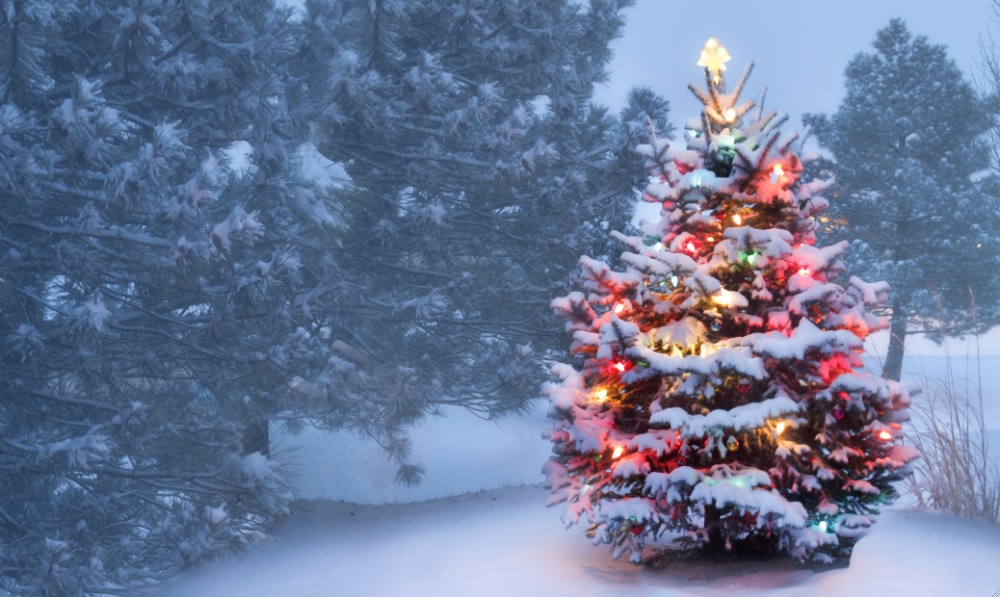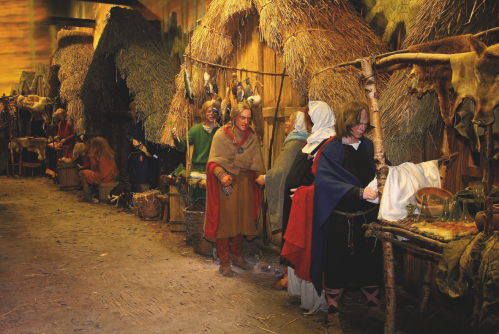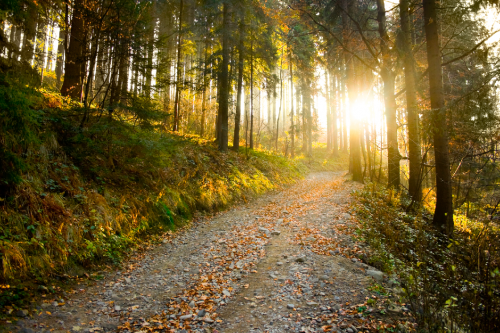Weather watch: Will it be a White Christmas?

The North East can be legendarily chilly, but why don’t we seem to get proper white Christmases like the ones Bing Crosby used to know? And how can we tell whether we’ll get one this year? Living North investigates
However, the faint sense of disappointment upon sprinting downstairs to find that everything is very conspicuously not covered in sparkling, crisp, deep snow is as much a part of Christmas as dozing off in front of Call the Midwife, staring dewy-eyed at sappy adverts for multinational corporations and trying to defuse a brewing family ruckus in the car park of a Harvester off the A1.
‘And thank heavens,’ shouts everyone who lives in the countryside, eyes glazing over at memories of being trapped by drifts and forced to subsist on rusks and brandy for weeks on end. Yes, snow can be a pain, but it’s so ruddy Christmassy, and it just feels like it never happens; at least not in the Dickensian Christmas sense. And that’s the heart-warming, god-bless-us-everyone Dickens, not the oh-dear- isn’t-the-Industrial-Revolution-a-sticky-wicket Dickens. Cholera isn’t very Christmassy.
Then again, a white Christmas doesn't entail exactly what you might think it would. For the Met Office, it's a white Christmas if a single, brave, orphan snowflake is observed fluttering through the wintry sky during the 24 hours of 25 December anywhere in the UK. Now, that feels to us like a pretty over-inclusive definition – what happens if a rogue ice shard from a defrosting freezer gets caught in a breeze and floats out in front of a Met Office observer? Does that count? – but then again the Met Office do know what they’re doing when it comes to precipitatory matters.
All that said, that definition does leave us all living through something like Schrödinger’s white Christmas, where until the Met Office open the box and have a look at what’s going on inside, we’re experiencing a white Christmas and a not-white Christmas simultaneously. Having to explain the complicated implications of the Copenhagen interpretation of quantum mechanics to a crestfallen seven-year-old isn’t the kind of thing one wants to be doing on Christmas morning.
According to Dennis Wheeler, formerly a Reader in Geography at Sunderland University and now an honorary part of Hull University’s History department, as well as a representative for the North East chapter of the Royal Meteorological Society, it’s difficult to know whether we’re likely to get a white Christmas even up to the day itself.
‘The problem is that because of the chaos in the climate system, you really can’t make a numerical forecast of the weather much beyond...’ He pauses, umming and aahing. ‘You’re pushing it a bit, say, seven days ahead.
‘If you want to look further ahead than that, you’re really making, frankly, a statistical forecast, which is something completely different,’ Dennis says. ‘All you do is say, “Right, how many white Christmases have we had over the last 30 years?” If it’s one in 30, basically you’ve got a one-in-30 chance of it happening again. As far as we’re concerned in the North East of England, it varies so much from place to place: down here on the coast where I live, we just don’t get white Christmases.
‘However, if you lived, say, in Alston or Hexham, in the Tyne Valley, or in the Dales, it’s a completely different picture and you’re much more likely to get snow there because they’re higher up, and they’re not protected by the relatively warm water of the North Sea.’
The phrase ‘relatively warm water of the North Sea’ is not one which anyone taking part in the traditional Boxing Day dip along the coast would concur with, but the point stands. Indeed, if you’re after a proper, old-timey, cor-blimey kind of a white Christmas rather than the Met Office’s unsentimental, technocratic definitions, you’re less likely to have your dreams come true than in the past. Bing Crosby wasn’t just being blindly nostalgic while banging on about Christmases he used to know.
In looking through the weather diaries of the lawyer and reformer James Losh, a contemporary of Earl Grey and an early member of Newcastle’s Literary and Philosophical Society, Dennis has found a treasure trove of information. The diaries, which were updated three times a day (most likely, Dennis thinks, by Losh’s gardener) run from 1802 to 1833 and provide a valuable insight into the weather back then.
‘You had a much higher probability of a white Christmas, and snow started to fall much earlier in the year, often in October and certainly November, and it would still be snowing in March and even April; very, very occasionally May,’ Dennis says. ‘The Tyne used to freeze over so you could go skating on it. Just in terms of Newcastle alone, when you get down to these individual records and this lovely, idiosyncratic view of the weather, you get a much clearer picture of climate change than you would ever get with global average statistics.’
While greenhouse gases are one big reason we don’t get the many white Christmases Losh would have known, there are a few other factors too. ‘It really isn’t until the 20th century when, using the models that they use, we can begin to reasonably confidently detect an anthropogenic fingerprint on climate change,’ Dennis explains. The ‘anthropogenic fingerprint’ here could be paraphrased as ‘heavy industry and industrialisation ruining nature’, but Dennis’ phrasing is slightly more poetic.
Huge volcanic eruptions in 1809 and 1816 – the latter being the famous Year Without A Summer – launched dust veils into the stratosphere which blocked out heat from the sun. The sun itself was in a quieter phase, forming fewer sunspots, and some experts have suggested that may have contributed to the big chill. Add to that the Little Ice Age which was still gripping Europe and North America, and it’s clear that things were pretty nippy in Losh’s time.
So, with all this in mind, it’s understandable that Dennis won’t be drawn on whether we’ll have proper snowfall this year. ‘Unless someone gave me 500 to one, I wouldn’t take the odds on a white Christmas,’ he says. Christmas is a time for wishes coming true and miracles happening though, isn’t it? Living North will stick a tenner on it. Let it snow.
Predicting Snow, the Old-Fashioned Way
If you’ve got persimmons growing, you can take a knife to one and look at which kitchen utensil the centre of it looks like: a knife means icy weather; a spoon means heavy, wet snow; and a fork means light snow, apparently. If it looks like Paul Hollywood brandishing a fish-slice, we’re in for a plague of locusts.
Hornets, wasps and bees tend to know which side their bread’s buttered when it comes to snow: an old wives’ tale says that if their nests are built on the ground, then you’re in for a snowless winter; if they’re up in the trees or, more likely, somewhere in your garden shed, then you’d best invest in skis.
A ring of refracted light encircling the moon is generally a good pointer that there’s rain or snow on the way: the corona is formed by sunlight shining through cirrostratus clouds, which generally bring moisture with them.





